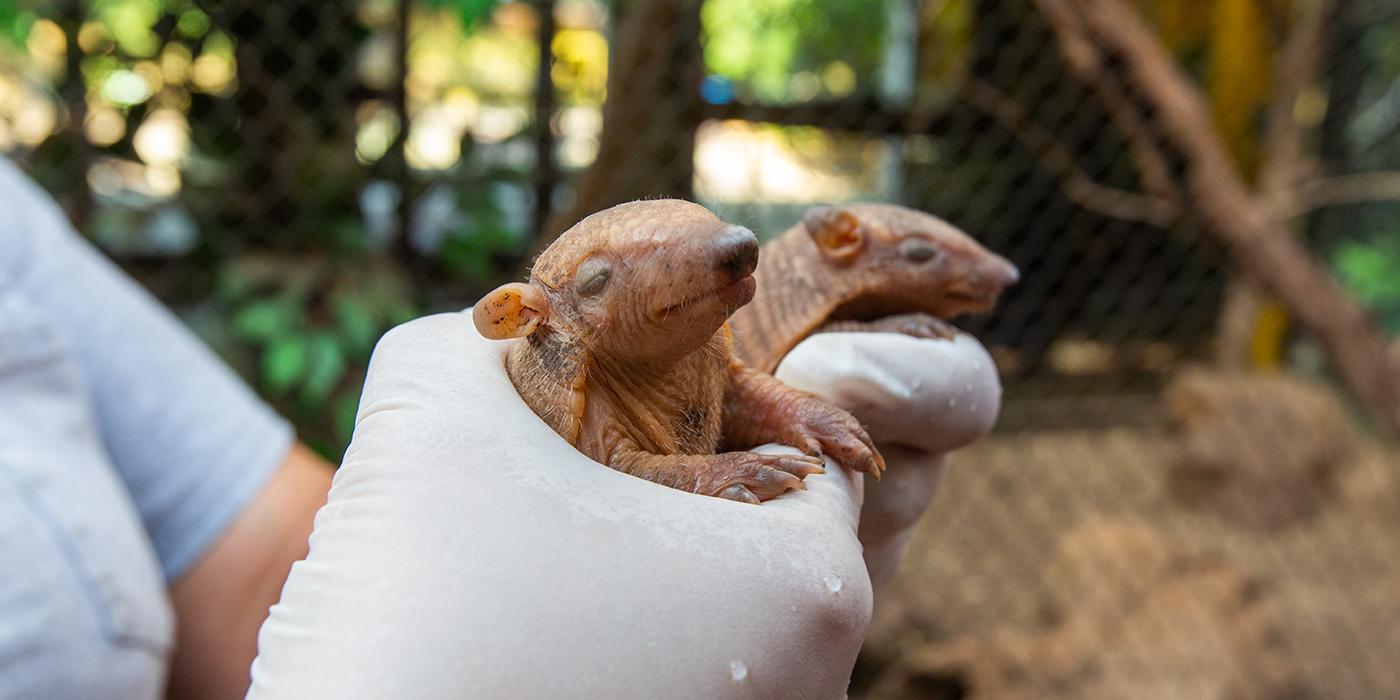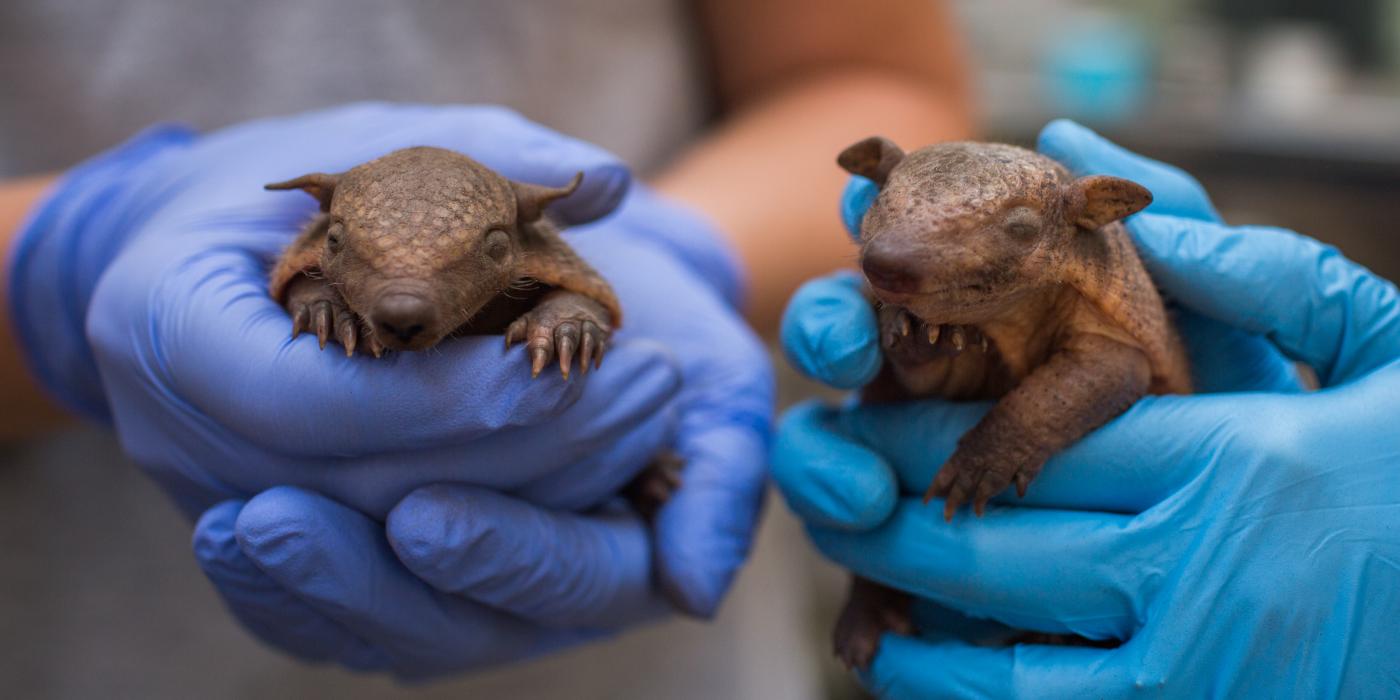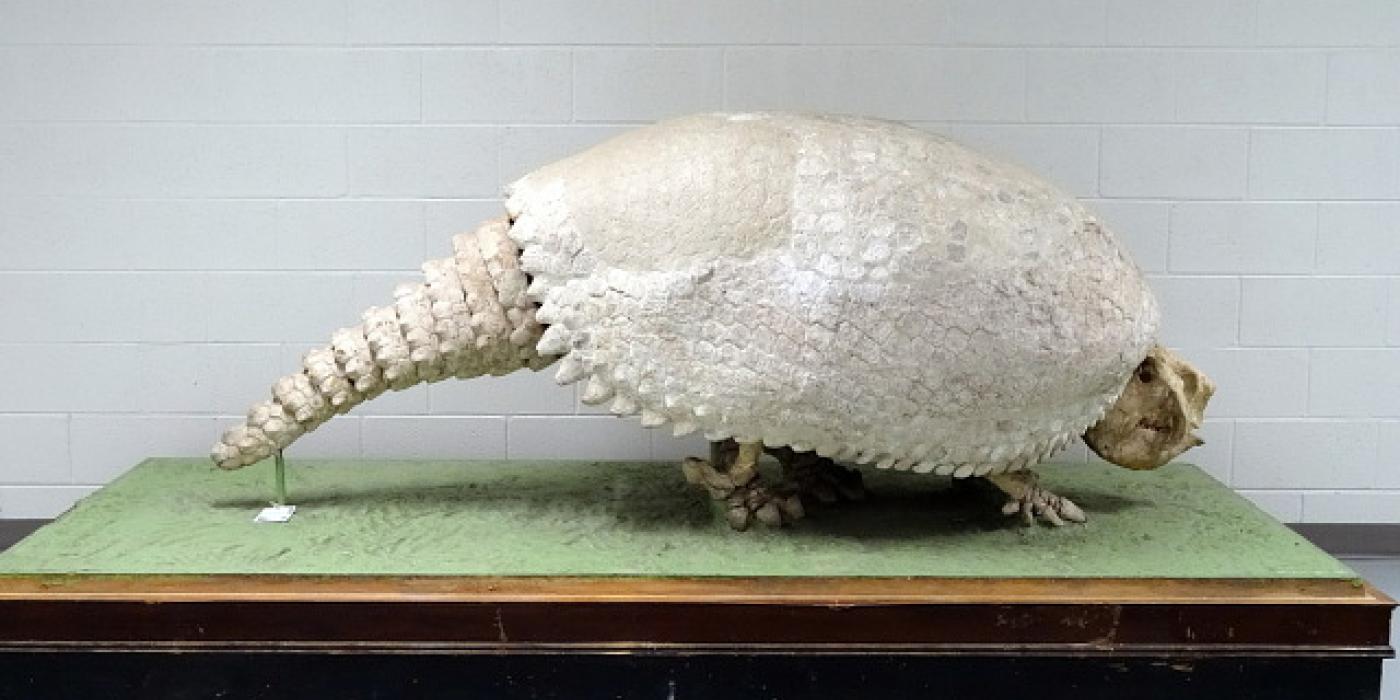Glyptodon Pups Born at the Smithsonian's National Zoo
Before you read...
Happy April Fool's! While the below story isn’t true, it is true that our Center for Conservation Genomics does research involving ancient DNA. Smithsonian scientists use ancient DNA to study evolutionary genetics and wildlife disease. Although we aren’t focused on bringing back prehistoric species, the Smithsonian has had notable success stories on saving “extinct in the wild” animals like the black-footed ferret. Visitors can also see and learn about the extant relatives of the glyptodons at the Small Mammal House, including the screaming hairy armadillo and three-banded armadillo.
This morning, April 1, four glyptodon hybrid pups were born at the Zoo's Small Mammal House via a La Plata three-banded armadillo surrogate mother. Due to the massive size of an adult glyptodon, officials at the zoo expect the exhibit will eventually need to be renamed to the ‘Mammals of Unusual Size’ House.
“Mom is doing great, and all the pups seem healthy,” said Kenton Kerns, assistant curator of the Small Mammal House. “Our whole team is thrilled to be part of this big moment in wildlife history.”
From four fossils discovered in South America in 2020, scientists extracted DNA from the remains of two adult and two juvenile glyptodons. Inspired by efforts to bring back other extinct species like woolly mammoths, dodos and thylacines, Smithsonian researchers teamed up with local archeologists to "de-extinct" the historically massive armadillo.
“We successfully reconstructed the glyptodon genome from the extracted DNA using the modern armadillo as reference,” said Robert Fleischer, a senior scientist and the head of the Smithsonian Conservation Biology Institute’s Center for Conservation Genomics. “We’re not quite sure how large this first generation will grow. It will take many generations and perhaps more genetic tinkering to bring the hybrids back to their original Pleistocene-era size, but that is the hope.”
Part of the Glyptotherium composite mount currently on exhibit in the Natural Museum of Natural History's Deep Time exhibit.
Credit: Smithsonian National Museum of Natural History
Researchers intend to build an assurance population, or a captive population with genetic diversity in human care, as they scale up the glyptodons. They hope to eventually re-introduce the species into its native forest habitat. However, if reintroduction is successful, the giant herbivores could create ecological challenges without a predator to keep the population stable.
“Thankfully, one of the glyptodon’s primary predators appears to be Arctotherium, or the prehistoric short-faced bears,” Fleischer said. “Those are relatives of the Andean bears we have today, so it wouldn’t be impossible to bring them back, too.”
Although the pups were born at the Zoo, they will not be on exhibit any time soon.



